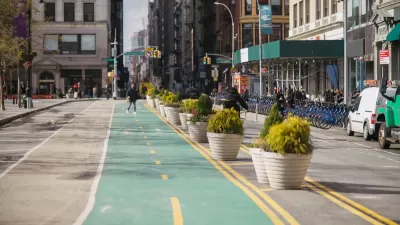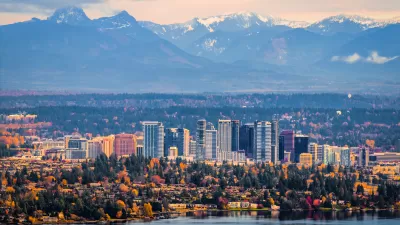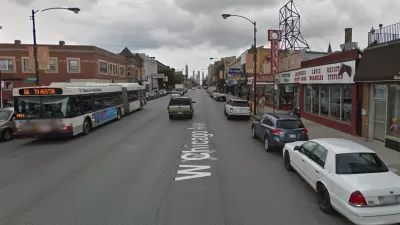Hong Kong's leaders want to build more parking for the growing number of private vehicles, but transportation experts suggest parking management could be a faster and more affordable solution.

Hong Kong's Transport and Housing Bureau (THB) wants to encourage the construction of more parking to "solve the illegal parking problem," but, according to James Ockenden writing in Transit Jam, transport planner Paul Barter argues this solution is "wasteful, unfair and slow." The government claims that while the number of parking spots has stagnated, "the number of private cars had grown by about 38%" between 2010 and 2020, necessitating a boost to parking facilities. But increasing the supply of parking "without having first improved the on-street parking management," says Barter, is a much less effective method than "bringing Hong Kong on-street parking management up to the best international practice."
According to Barter, improving on-street parking management through "self-enforcing design such as bollards and delivery priorities" and market pricing would be a "much more immediate, fast-working and effective solution" than the "extremely low (and costly)" plan to build more physical parking spaces.
As a city where "travel options are rich," technology can help manage available parking and reduce the "perceived" shortage quickly and cheaply. Despite evidence that "such strategies have been proven to increase congestion" around the world, "THB Secretary Frank Chan Fan told LegCo the government’s strategy to solve traffic congestion was to build more roads, widen existing roads and build more car parking." The government maintains that "it is imperative that the Government continues to provide more car parking spaces in order to avoid illegal parking."
FULL STORY: “WASTEFUL, UNFAIR AND SLOW”: EXPERTS DENOUNCE CITY’S PARKING PLAN

Trump Administration Could Effectively End Housing Voucher Program
Federal officials are eyeing major cuts to the Section 8 program that helps millions of low-income households pay rent.

Planetizen Federal Action Tracker
A weekly monitor of how Trump’s orders and actions are impacting planners and planning in America.

Ken Jennings Launches Transit Web Series
The Jeopardy champ wants you to ride public transit.

Washington Legislature Passes Rent Increase Cap
A bill that caps rent increases at 7 percent plus inflation is headed to the governor’s desk.

From Planning to Action: How LA County Is Rethinking Climate Resilience
Chief Sustainability Officer Rita Kampalath outlines the County’s shift from planning to implementation in its climate resilience efforts, emphasizing cross-departmental coordination, updated recovery strategies, and the need for flexible funding.

New Mexico Aging Department Commits to Helping Seniors Age ‘In Place’ and ‘Autonomously’ in New Draft Plan
As New Mexico’s population of seniors continues to grow, the state’s aging department is proposing expanded initiatives to help seniors maintain their autonomy while also supporting family caregivers.
Urban Design for Planners 1: Software Tools
This six-course series explores essential urban design concepts using open source software and equips planners with the tools they need to participate fully in the urban design process.
Planning for Universal Design
Learn the tools for implementing Universal Design in planning regulations.
Heyer Gruel & Associates PA
Ada County Highway District
Institute for Housing and Urban Development Studies (IHS)
City of Grandview
Harvard GSD Executive Education
Toledo-Lucas County Plan Commissions
Salt Lake City
NYU Wagner Graduate School of Public Service





























